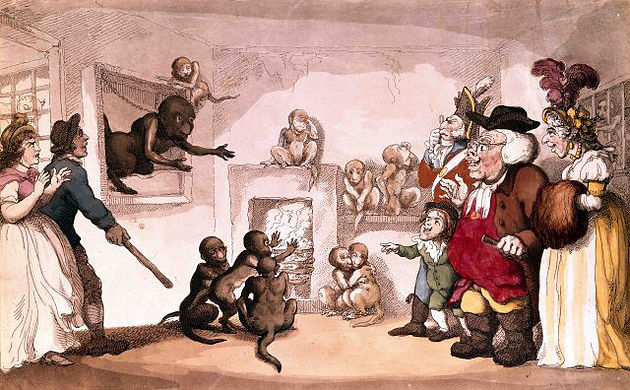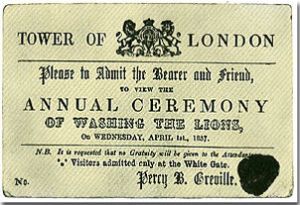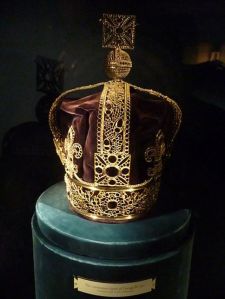
I am lucky enough to live just 30 minutes from the city of London by train and the station I go into is Tower Hill. To all non-Londoners that probably means very little, but to those in the know, that is the best London station that there is because once you climb up those steps out of the ground the first thing that you see is the Tower of London. And the Tower of London just so happens to be my absolute favourite building in the whole world. Period.
I have lost count of how many times I have been there, both with my family and on school trips (yes, I used to be a history teacher before I wrote for Harlequin Mills and Boon) and every single time I visit I learn something new about the place. However, this post is not going to be a long diatribe about all of the things I know about the Tower (which is a lot, trust me). It is plea to all of my fellow writers of historical fiction set in the Regency or Victorian period, a call to arms if you like, to get the place mentioned in your books more often.
Frankly, I am a little tired of seeing the same old places in Regency stories–Rotten Row, Gunter’s Tea shop, the British Museum (usually to look at Mr Elgin’s magnificent marbles), and Vauxhall Gardens, yet nobody takes their characters to the Tower. Not only was it still a prison and the main military garrison for London during this period, it also housed the Royal Mint. Every gold sovereign and silver guinea you read about in those torrid pages was made at the Tower. It was the only place secure enough for the government of the day to send their gold to. Despite all of that, that wonderful Norman castle was almost as big of a tourist attraction then as it is now.

For a start, it was the home of the world famous Royal Menagerie, the only place for the well-heeled to see ferocious beasts from around the globe. Over its 600 year stay in William the Conqueror’s home, the Menagerie housed everything from monkeys and polar bears to elephants and lions. The cartoon above by Thomas Rowlandson is entitled The Monkey Room from the year 1810 and it clearly shows good ton of the Regency visiting the exhibit. Once a year, the truly daring could watch the ‘Annual Ceremony of Washing the Lions’. Tickets like this one were exceptionally hard to come by and highly sought after. What better outing could a courting hero take his heroine? Although it was definitely not for the faint-hearted.
Wild animals aside, after Napoleon and the prolonged Peninsular Wars, the British were very keen on displaying their might. To that end, a massive exhibition of military weapons, cannons and anything else that showed the unbeatable power of the country, was put on proud display in the Tower. Several incarnations of the Tower of London Guidebook were published as swarms and swarms of visitors came to see exactly what made Britain Great.
To have great power also meant having visible wealth and the wealth of the nation, in the form of the crown jewels, were a regular crowd pleaser. Beefeaters guarded all of the precious crowns from King Charles II onward and visitors were charged a few pennies to gawp at them through iron bars.

Lovers of this period of British history will know that the Regent, later King George IV, was not the most popular of monarchs. One of the main reasons for this was his penchant for spending the money that came from everyone else’s hard-earned taxes on himself. One of the most interesting things I have seen at the Tower was his coronation crown. George being George, he wanted a new crown, more opulent and encrusted with more jewels than any other- so he went ahead and had it made without the permission of Parliament. He assumed, quite wrongly as it turned out, that once they saw it in all of its magnificence they would relent and cough up the dosh. They didn’t. After the coronation, it was unceremoniously stripped of all of its borrowed diamonds and now looks very sad indeed up against all of the other crowns on display.

Lovers of this period of British history will know that the Regent, later King George IV, was not the most popular of monarchs. One of the main reasons for this was his penchant for spending the money that came from everyone else’s hard-earned taxes on himself. One of the most interesting things I have seen at the Tower was his coronation crown. George being George, he wanted a new crown, more opulent and encrusted with more jewels than any other- so he went ahead and had it made without the permission of Parliament. He assumed, quite wrongly as it turned out, that once they saw it in all of its magnificence they would relent and cough up the dosh. They didn’t. After the coronation, it was unceremoniously stripped of all of its borrowed diamonds and now looks very sad indeed up against all of the other crowns on display.
If I have still not convinced you that the wonderful Tower of London does not belong in your next Regency romance, then perhaps this fact will: One of the Constables of the Tower was none other than the Duke of Wellington himself! Yes indeed, after Waterloo and a stint running the country, everybody’s favourite Regency Duke looked after the day to day running of the world’s best castle. Not only that, but he was sort of responsible for that fabulous and moving installation of poppies to commemorate the 100th anniversary of the start of World War One. How? I hear you ask.
 Well seeing as you’ve asked nicely, I shall tell you. For hundreds of years the Tower was surrounded by a moat that drew all of its water from the River Thames. By the mid-nineteenth century, the Thames stank to high heaven because it had been used as a sewer for over a thousand years. Fearing it might cause yet another deadly outbreak of cholera or typhoid, the Duke of Wellington had the fetid moat filled in and grassed over. Had he not done that, then the poppies would not have happened and I would not have this–my prized poppy from the 2014 ‘Blood Swept Lands and Seas of Red’ exhibition (left).
Well seeing as you’ve asked nicely, I shall tell you. For hundreds of years the Tower was surrounded by a moat that drew all of its water from the River Thames. By the mid-nineteenth century, the Thames stank to high heaven because it had been used as a sewer for over a thousand years. Fearing it might cause yet another deadly outbreak of cholera or typhoid, the Duke of Wellington had the fetid moat filled in and grassed over. Had he not done that, then the poppies would not have happened and I would not have this–my prized poppy from the 2014 ‘Blood Swept Lands and Seas of Red’ exhibition (left).
I was one of the 888,246 people lucky enough to get one of the actual poppies that graced the moat and if you look closely you can still see the hallowed mud from the Tower encrusted in the centre. It is just too special to wash off. Not only does it symbolise the tragic carnage and futility of all wars but it is a little piece of sacred ground–a part of the Tower’s epic heritage.
So don’t forget the magnificent Tower of London when you write your next book. Lock someone in it, station them there or simply write a scene in which they visit it–much like thousands of Regency dwellers actually did at the time. Send them to the Tower! I know I will…
Virginia Heath writes witty, raunchy Regency romances for Harlequin Mills & Boon. That Despicable Rogue is available now and her second novel, Her Enemy at the Altar, comes out in July 2016.

Oh yes the poppies. I loved it when I was there when they were setting it all up. It was just beautiful. But to know that the moat used to be the dumping site for human unimaginables….. Think of the stench, in the summer heat! (>﹏<)
LikeLike
It must have really been something! I didn’t see the poppies in person, but the photos were beautiful. Very striking!
LikeLike
[…] Source: Take Them to the Tower! Adventures in Regency Tourism […]
LikeLike
What an interesting post. I do write in the regency period, although now set them in Edinburgh, so i’ll give some thought to your suggestion. I went to visit the poppies on Armistice Sunday and that was a moving experience. anne stenhouse
LikeLike
Regency Edinburgh sounds fascinating! I’d love to know more about that myself. If you’d ever like to stop by to share some of your research, please let us know! 🙂
LikeLike
Wow, I never knew that you could see the Royal Menagerie at the tower. I have heard of it before but what a surprise that it was there. Now I wonder what other surprises are hiding around London 🙂
LikeLike
There are plenty of surprises around London! We’re finding more all the time. I like the idea of being able to see animals at the Tower, but I wonder about the conditions they were kept in. I’m sure I read somewhere about exotic animals being fed bread and wine — maybe less than ideal!
LikeLike